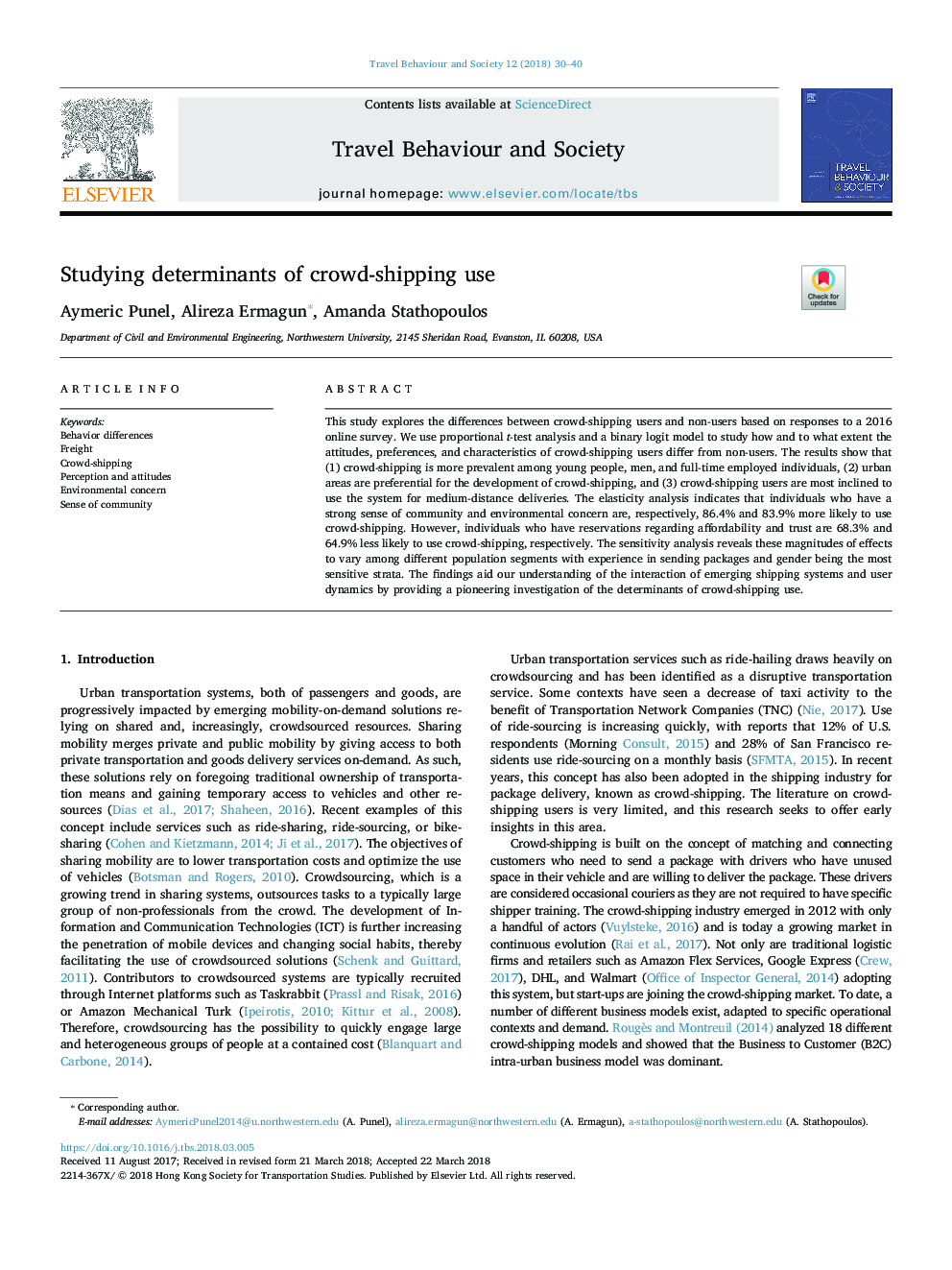| Article ID | Journal | Published Year | Pages | File Type |
|---|---|---|---|---|
| 6576305 | Travel Behaviour and Society | 2018 | 11 Pages |
Abstract
This study explores the differences between crowd-shipping users and non-users based on responses to a 2016 online survey. We use proportional t-test analysis and a binary logit model to study how and to what extent the attitudes, preferences, and characteristics of crowd-shipping users differ from non-users. The results show that (1) crowd-shipping is more prevalent among young people, men, and full-time employed individuals, (2) urban areas are preferential for the development of crowd-shipping, and (3) crowd-shipping users are most inclined to use the system for medium-distance deliveries. The elasticity analysis indicates that individuals who have a strong sense of community and environmental concern are, respectively, 86.4% and 83.9% more likely to use crowd-shipping. However, individuals who have reservations regarding affordability and trust are 68.3% and 64.9% less likely to use crowd-shipping, respectively. The sensitivity analysis reveals these magnitudes of effects to vary among different population segments with experience in sending packages and gender being the most sensitive strata. The findings aid our understanding of the interaction of emerging shipping systems and user dynamics by providing a pioneering investigation of the determinants of crowd-shipping use.
Related Topics
Life Sciences
Environmental Science
Management, Monitoring, Policy and Law
Authors
Aymeric Punel, Alireza Ermagun, Amanda Stathopoulos,
